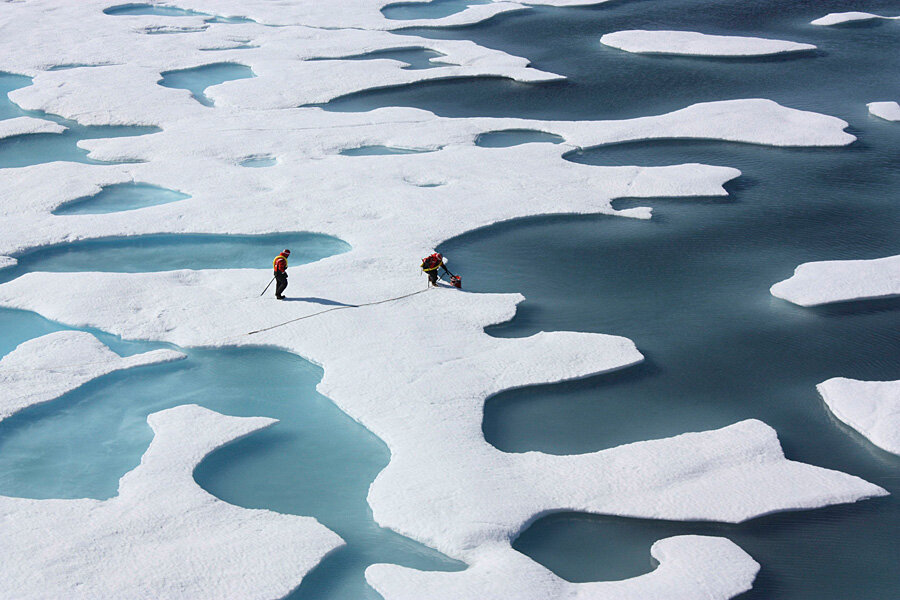How emissions threaten humpback whales
Loading...
Carbon dioxide emissions do more than just trap heat in the atmosphere; CO2 also lowers the pH of the seawater, making it more acidic. Now, research suggests that this acidification could drastically transform the entire ocean food chain.
It all starts with phytoplankton, the photosynthesizing microbes that live in the upper layers of the world's oceans and lakes. Phytoplankton form the basis of the entire marine food chain – they are eaten by krill, tiny crustaceans that, in turn, serve as prey for fish, penguins, seals, and even the 40-ton humpback whale.
A study published this week in Nature Climate Change magazine finds that ocean acidification is ushering in dramatic environmental changes for phytoplankton.
"I try not to be an alarmist, because it’s not good for anyone," said the paper's lead author, Massachusetts Institute of Technology scientist Stephanie Dutkiewicz, in a press release. "But I was actually quite shocked by the results."
She explains, "The fact that there are so many different possible changes, that different phytoplankton respond differently, means there might be some quite traumatic changes in the communities over the course of the 21st century."
The ocean absorbs about a third of the carbon dioxide emissions generated by human activity, or about 10 billion metric tons each year. Prior to the Industrial Revolution, the pH level of the oceans was about 8.2. Since then, it has dropped to 8.1. Climate change projections indicate that by the year 2100, the pH of the ocean will be about 7.8.
Ocean acidification has left a vivid mark on coral populations, where it has been studied extensively. "Coral bleaching" occurs when corals lose all their algae, resulting in completely white structures. If the bleaching is prolonged, the coral will die.
"One of the striking things about this work is it shows that all phytoplankton groups will be affected by ocean acidification — not just the groups that make calcium carbonate shells, like those you see on corals, which is what researchers have traditionally assumed," said J. Jeffrey Morris, another scientist on the research team, in a press release from the University of Alabama at Birmingham.
The team compiled data from 49 different papers that studied the impact of atmospheric carbon dioxide levels on marine phytoplankton. They then sorted the 96 phytoplankton organisms analyzed in the prior research into six broad categories, based on the role they play in cycling nutrients through the ocean. The scientists found that some of the groups had a higher growth rate response as a result of the ocean acidification, while other groups had a lower one, or didn't grow as much. Variations existed even within the growth rates of the groups, suggesting that competition within, as well as between, the groups played an important role.
"Normally, over evolutionary time, things come to a stable point where multiple species can live together," said Dr. Dutkiewicz in the press release. "But if one of them gets a boost, even though the other might get a boost, but not as big, it might get outcompeted. So you might get whole species just disappearing because responses are slightly different."
The team also studied how ocean acidification changes where phytoplankton thrive within the world's oceans. They projected that, by the year 2100, species will have shifted more than 300 miles toward the poles.
"If you went to Boston Harbor and pulled up a cup of water and looked under a microscope, you’d see very different species later on," Dutkiewicz said. "By 2100, you’d see ones that were living maybe closer to North Carolina now, up near Boston."






